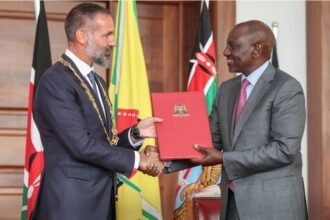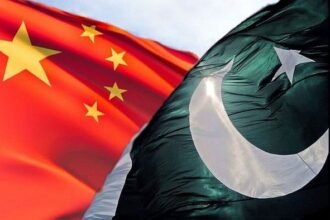
By Atif Ali
On April 22, a terrorist attack in pahalgam, Indian- administered Kashmir, 26 people had lost their lives and injured dozens more. No one anticipated that this would mark the beginning of a new unconventional war between two nuclear armed countries at the end.
The outcome of the war remained ambiguous for several days, both countries celebrated victory and US President Trump is still praising himself for ceasefire between countries at different events. India claimed it achieved its objectives by targeting terrorist camps in Pakistan in Operation Sindoor. Pakistan named his operation “Bunyan- ul –Marsous” in response to operation sindoor. In a few days of escalation has changed status of both country in the world. India has lost its Supremacy in South Asia as a rising Asian economic and military Power.
Expert’s analyses tell the story of possible reasons on Indian escalation. Pakistan is struggling political unrest from couple of years. India has underestimated Pakistan military economic strengths. India always considers himself as a rising economic giant in Asia.
India faced Pakistan with traditional war equipment and not faced any modern war with missiles and drones from anywhere before. This was the first time India and Pakistan fought with modern¬¬- day warfare. Pakistan and India are both nuclear armed countries therefore; consequences of escalation should be assessed before escalation.
Besides clear stance from Pakistan on its self-defense if India damaged its sovereignty, India starting a war with Pakistan suggests it believed either Pakistan would not retaliate, or India had a strong defense system in case of missile attacks from Pakistan, or it underestimated Pakistan’s military capabilities and infrastructure. India’s blame game and its quickly initiated Operation Sindoor against Pakistan proved successful for domestic political gains of Prime Minister Narendra Modi.
The war outcomes were anticipated differently, but the result turned out otherwise. India’s image as an emerging global power is now dented in the world. Pakistan, who is suffering from economic hardships, emerged with stronger military strength. In short, post-conflict gains or losses were not, analyzed or clearly proven, showing India’s strategic foreign policy failure in this escalation with Pakistan.
In term of technological dependence, India experienced French Rafale jets and other indigenous missiles in attacks on Pakistan. In reply, Pakistan has used Chinese technology, especially fighter jets such as Chengdu J-10C, Turkish–Pakistani YIHA III & Asisguard Songar drones, as well as its Fatah I MRL & Fatah II SRBM.
The damage of military stations on both sides shows efficiency of missile technologies. According available evidence, India has also attacked some mosques in Pakistan calling them outlets of terrorist organizations before Pakistan retaliated as its response.
Moreover, Pakistan targeting Indian modern French aircraft Rafale also highlighted Indian air defense failure to a large extent, despite having renowned technological aircraft. Pakistan dominance in Air defense field showed its defense capabilities and the effectiveness of Chinese jets used in air war between the two.
Some global experts named the India–Pakistan war is a war of US/Western technology vs. Chinese technology. This indicates Pakistan defense engagement with China is more valuable than many actors previously thought. Chinese technology proved more effective and successful than western machinery used in India Pakistan escalation. Therefore, China and Pakistan are now closer statergic partners of each other. The tested success of Chinese technology brought global attention towards China will give economic, diplomatic and military benefits to China. This will be ultimately good for Pakistan as a close partner of China. Overall, China has played great role in this war.
Pakistan Foreign Office expressed sorrow for Pahalgam massacre. India blamed Pakistan and suspended Indus Water Treaty IWT, a treaty that is not suspended even during major wars between India and Pakistan. India has also closed Attari border check post and ordered Pakistani citizens in India to leave the country within next 48 hours under SAARC Visa Exemption Scheme SVES. India had all aggression towards Pakistan on Pahalgam attack. In addation, the Modi suspended diplomatic relations, blocked the Pakistani governments X account, and banned sixteen Pakistani YouTube channels.
Pakistan has suggests India a neutral International investigation on Pahalgam incident following India accused Pakistan. However, India has denied on the given proposal of independent investigation. Pakistan has reassessed India’s intentions seriously, when India threaten Pakistan to violate treaty agreements.
Next couple of days remained very crucial in the relationship between the two countries. Pakistan declared an act of war if India suspended Indus Water Treaty. Pakistan closed trade, airspace and also Wagah border, and set a deadline of 30 April 2025 for Indian Sikh pilgrims to leave who had come through the border. For SVES holders, Pakistan did the same exercise, suspending it with immediate effect.
Till 30th April, Indian advisors were leaving and diplomatic staff was reduced to a minimum. It is evident that Pakistan took a hard stance after India’s major step toward suspension of the Indus Water Treaty, and tensions escalated further. India and Pakistan armies exchanged fire at Line of Control in Kashmir.
Overall, time till 6th of May witnessed LOC ceasefire violations, important statements from government and Pakistan military, interviews, drills, banning accounts, suspension of trade, mailing services, Pakistani and Indian flagships to each other from both sides of the border.
On May 6 and 7, India launched missile attacks on Pakistan in different areas. Pakistan claimed India has targeted Pakistani citizens. Pakistan threatens India for the consequences of attacks. According to media reports, Pakistan has launched drone and missile attacks on India targeting 36 Indian locations on 7 and 8 May.
India and Pakistan continued exchanging attacks until a ceasefire was declared on May. US president Donald Trump has claimed his role in India and Pakistan ceasefire deal. He announced this news at his Truth Social account. Pakistani Prime Minister appreciated mediation of Donald Trump on ceasefire agreement, while India still has not admired Trump’s claim about mediating the ceasefire. The dangerous potential of modern warfare between nuclear-armed rivals escalated tension. Pakistan has now emerged as a stronger military power and has successfully dented India’s Image as a rising South Asian power.
The writer is graduated in social sciences from QAU and a freelance contributor. He can be reached at matifali1997@gmail.com










